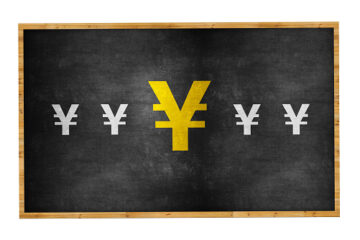Target has seen its business decline steadily for more than a year. It’s not a massive drop, but it’s enough of a decline that CEO Brian Cornell addressed it at the top of the company’s first-quarter earnings call.
“In the first quarter, our team and our business faced an exceptionally challenging environment that affected our performance with declines in both traffic and sales, most notably in our discretionary categories,” he shared.
Related: Amazon’s latest big bet may flop
And, while Cornell wasn’t exactly making excuses, he did try to explain his chain’s sales declines.
“For several years now, we’ve seen pressure in our discretionary businesses as spending adjusted down from elevated levels during the pandemic and then move[d] further away in the face of historically high inflation and needs-based categories,” he added.
💵💰Don’t miss the move: Subscribe to TheStreet’s free daily newsletter 💰💵
Cornell also made it clear that things may not improve quickly.
“On top of those ongoing challenges, we faced several additional headwinds this quarter, including five consecutive months of declining consumer confidence, uncertainty regarding the impact of potential tariffs, and the reaction to the updates we shared on belonging in January,” he shared.
Target CEO Brian Cornell made it clear that he’s not sure when business will turn around.
Image source: Shutterstock
Target’s CEO making changes, not excuses
Cornell wanted to offer context for his company’s performance, but he was not asking for forgiveness.
“While we believe each of these factors played a role in our first-quarter performance, we can’t reliably estimate the impact of each one separately,” he said. “I want to be clear that we’re not satisfied with this performance, and we’re moving with urgency to navigate through this period of volatility.”
He believes that a return to basics will help Target right the ship.
“Throughout our operations, we’re focused on consistency and reliability with an emphasis on retail fundamentals and delivering a superior guest experience that features newness, differentiation, and value,” he said.
To make that happen, he plans to lean heavily into value.
“For the summer season, we’re offering more than 10,000 new items, starting at just $1. In the popular Bullseye’s Playground, we will continue offering items at $1, $3, and $5. And we’re expanding this assortment to include beauty items as well,” he said.
More Retail:
Costco quietly plans to offer a convenient service for customersT-Mobile pulls the plug on generous offer, angering customersKellogg sounds alarm on unexpected shift in customer behavi
The company will also take a seasonal approach to value.
“And by July, we’ll shift to the critical back-to-school and college season, standing tall for value as we focus on supporting families during key life moments,” he added.
It’s not just about price for Target
Cornell has made some changes to his leadership team. He’s also trying to make adjustments to give the brand an edge over rivals like Walmart and Costco.
“We’re also finding new ways to move faster and operate differently, given that uncertainty and the pace of change are higher than ever….We announced the formation of an Enterprise Acceleration Office, which (COO Michael Fiddelke) will be leading, as well as several organizational changes to bring even more clarity and speed to how we operate and advance our strategy across the company,” he added.
Cornell appears to be ceding some power to Fiddelke, or at least empowering him.
“This effort goes beyond improving efficiency with a focus on greater adaptability, innovation, resilience, and ultimately, growth. Based on his expertise and the insights he’s gained for more than 20 years at this company, Michael is the perfect leader for this work,” he added.
Fiddelke wants Target to focus on two key areas regarding inventory.
“Regarding inventory reliability, we remain focused on improving overall in-stock levels with a particular focus on top-selling items and peak shopping periods. And while there’s still work to do, we’re making real progress in virtually every way we measure inventory availability, from the overall ‘purchasability’ of our total assortment to the in-stock position on key items, we’ve seen improvement year-over-year, building on the increases we’ve delivered for well over a year now,” he shared.
Related: Dollar Tree raises red flag about unexpected customer behavior
Fiddelke also wants to see those items actually get purchased.
“And thanks to the many efforts of our team, we’ve continued to make very compelling progress on inventory shrink with far better results earlier in the year than we expected, helping to improve our inventory reliability as well as our profitability,” he added.


